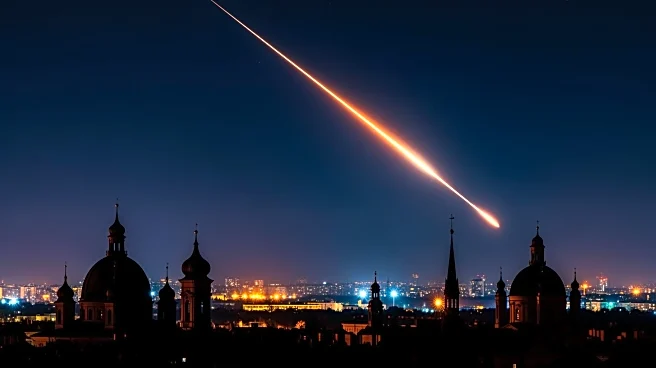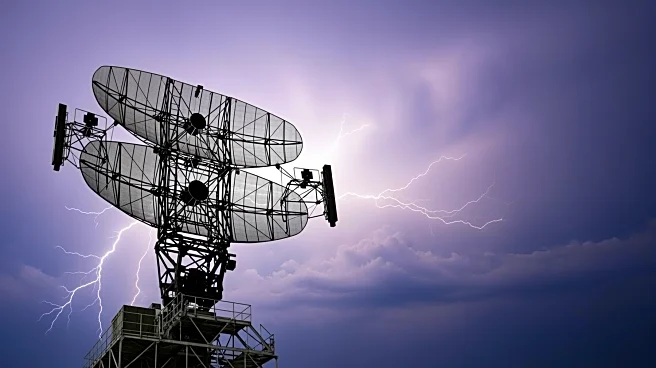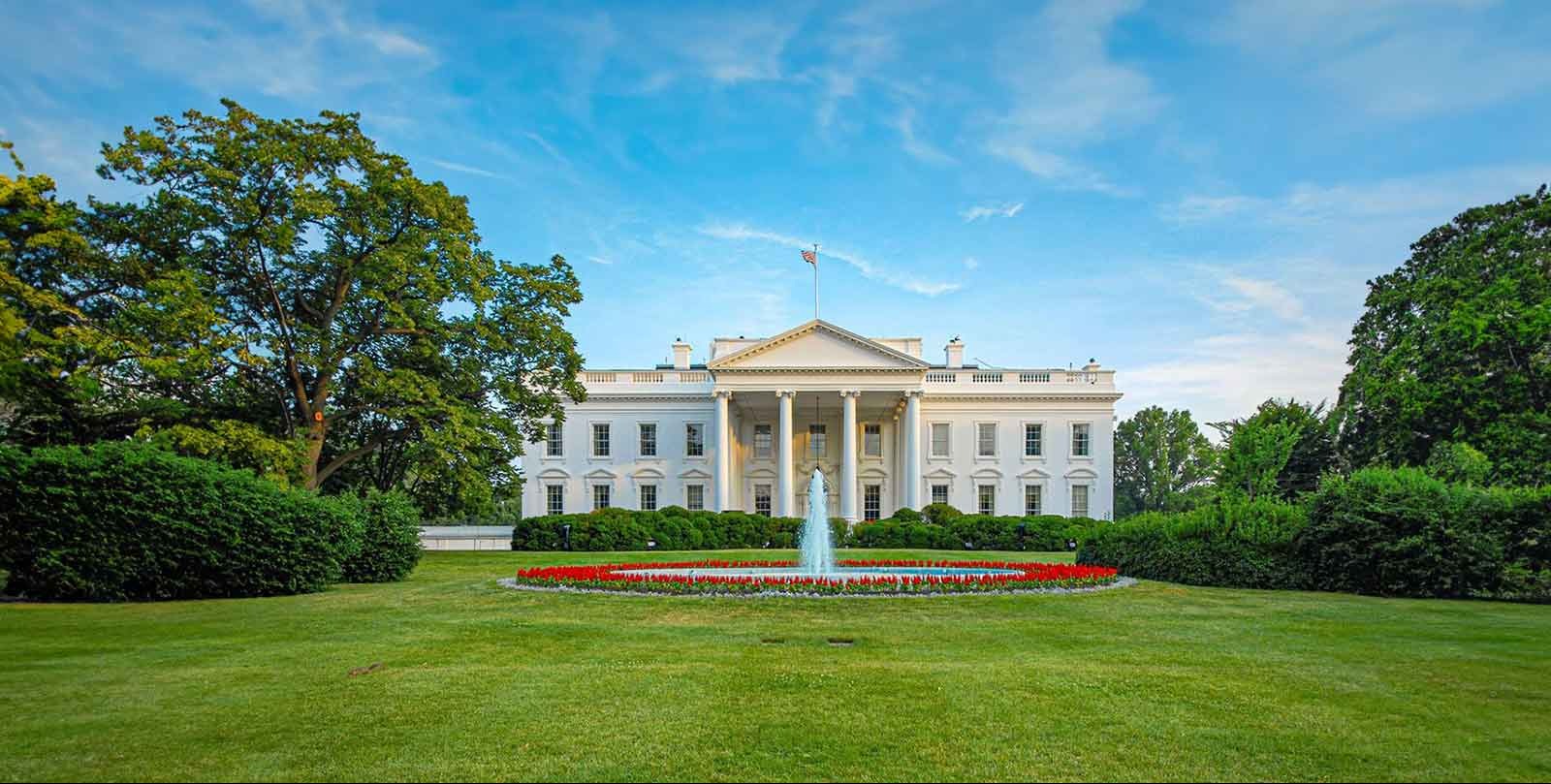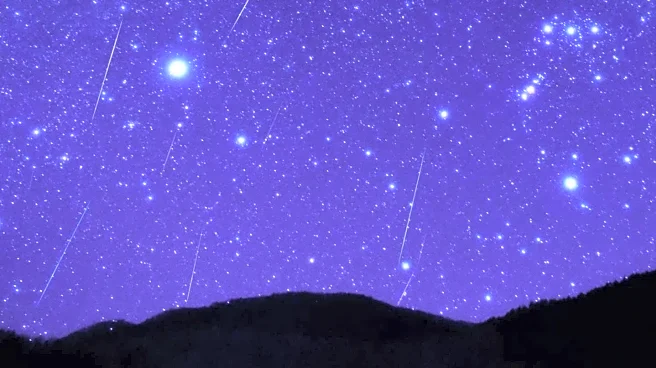What's Happening?
A bright green meteor was observed streaking across the sky over Moscow on the evening of October 27, leaving a glowing trail behind. The event captured the attention of residents and sparked various speculations,
including theories about missile tests. However, experts clarified that the phenomenon was a natural occurrence. Sergey Bogachev, head of the Space Research Institute of the Russian Academy of Sciences, explained that such 'fireballs' are not uncommon and can be seen regularly if one knows where to look. The meteor's green hue indicates the presence of nickel in its composition, a characteristic shared with similar meteors observed in other parts of the world, such as Turkey in 2023.
Why It's Important?
The sighting of the meteor over Moscow highlights the ongoing interest and curiosity surrounding astronomical events. Such occurrences can have implications for scientific research, particularly in understanding the composition and behavior of meteoroids as they enter Earth's atmosphere. The event also serves as a reminder of the natural phenomena that continue to intrigue and inspire both scientists and the general public. Additionally, the meteor's visibility over a major city like Moscow underscores the potential for widespread public engagement and interest in space-related events.
What's Next?
While the meteor itself has passed, the event may lead to increased interest in astronomical observations and research in Russia and beyond. Scientists and enthusiasts may look to capitalize on the public's curiosity by organizing educational events or discussions about meteors and other celestial phenomena. Furthermore, the incident could prompt further studies into the frequency and characteristics of meteors visible from urban areas, potentially leading to new insights into atmospheric conditions and space debris.
Beyond the Headlines
The meteor's appearance over Moscow also touches on cultural and historical aspects of human fascination with the skies. Throughout history, celestial events have often been interpreted as omens or signs, influencing cultural narratives and beliefs. In modern times, while scientific explanations prevail, the awe-inspiring nature of such events continues to captivate imaginations and foster a sense of wonder about the universe.













